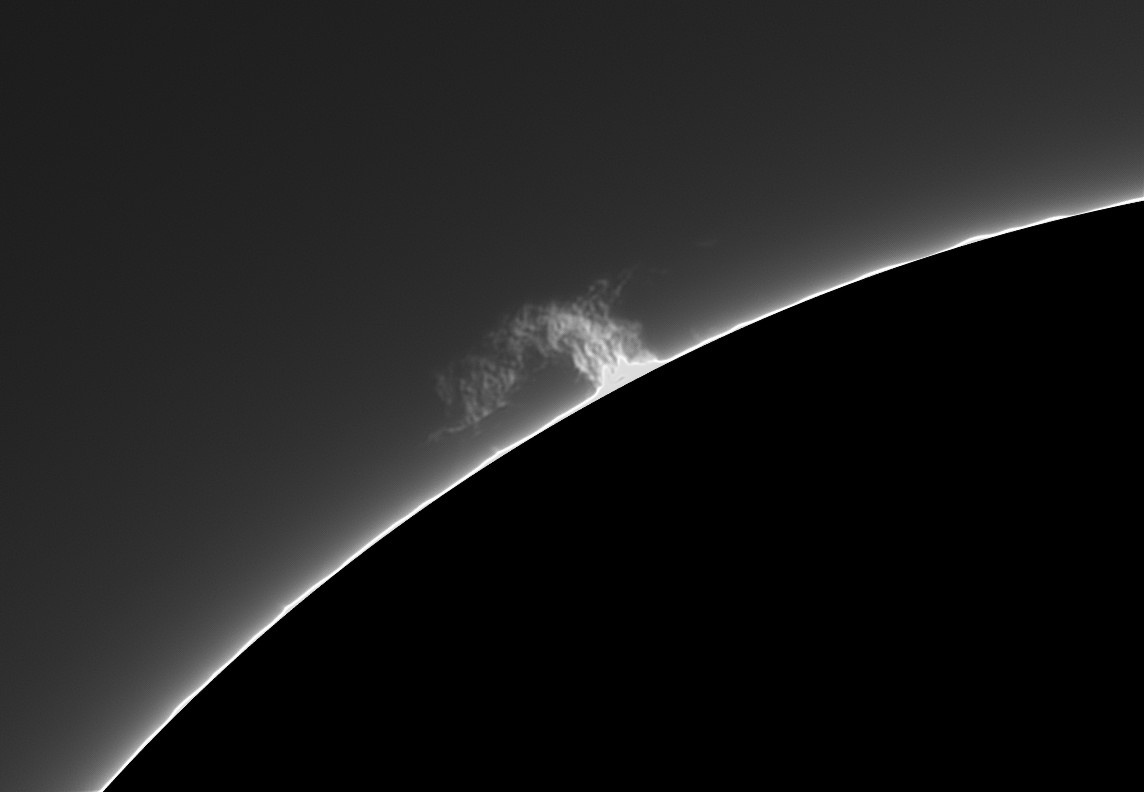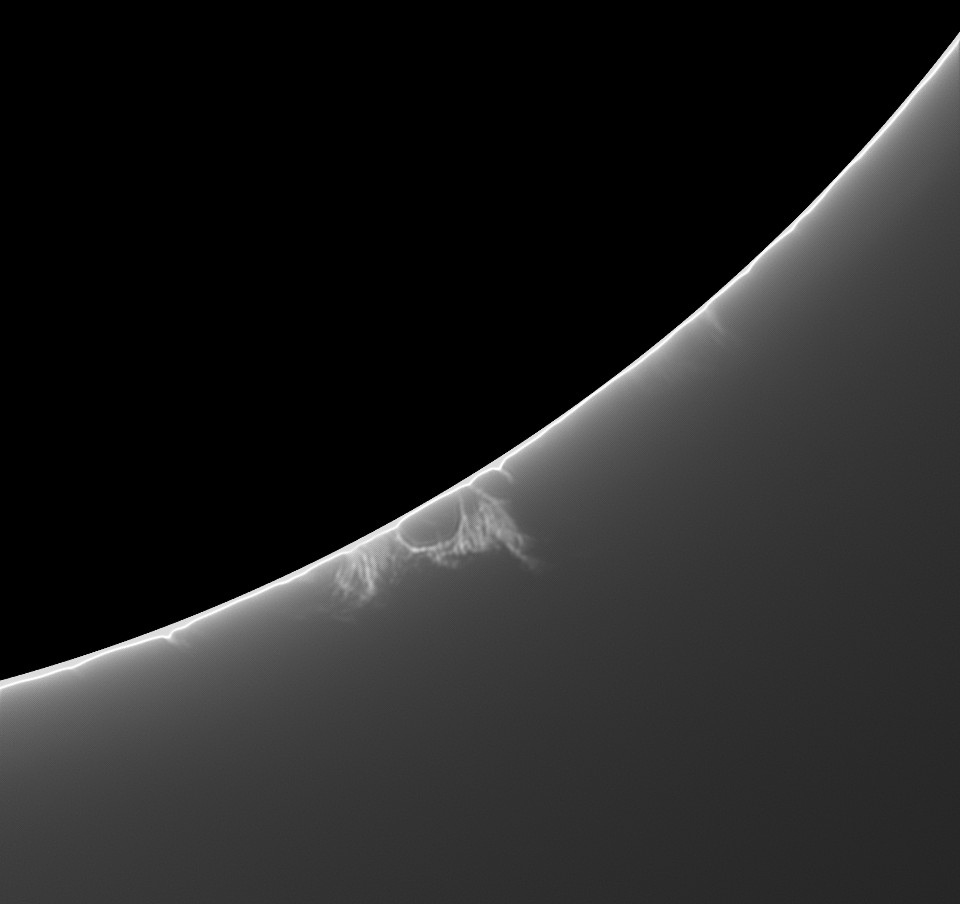-
Posts
13,036 -
Joined
-
Last visited
Content Type
Profiles
Forums
Gallery
Events
Blogs
Posts posted by Merlin66
-
-
I used a pressurised air can, until I found it just spread small "motes" on the sensor.... now I rely on the Rocket blower.....
-
 1
1
-
-
Hmmm, if you use >f15 you don’t need to stretch the image to see the small motes!!
-
 1
1
-
-
I found the KimiWipes we’re stocked by a medical supply company.....
-
 1
1
-
-
Whooo this original thread goes back to 2017!!
Richard,
The Newton Rings are caused by interference reflections within the camera chip cover plate and construction. Some cameras suffer more than others!
Double stacking can make Newton Rings worse!
I also find that some Barlows/ Powermates show them worse than others.
The only solution I've found it to fit a T2 tilter in front of the camera. I use the ZWO version on both my ASI 1600 and ASI 174.
-
IMHO...
Access all the filters and use a Rocket blower to remove as much dust as you can. Then, as said by Discardedastro, you can use KimiWipes (non shedding) and IPA to clean each surface.
For the camera do the same for the front of the glass cover plate....hopefully this should remove the problem.
However....I do solar imaging and found there were still small motes and small (very small) rings.....on/in the camera!
These didn't really appear on flats taken at f5 ( I cover the objective with a clear plastic bag and image a bright daytime sky) but they looked absolutely horrible at f15. The larger f ratio seems to show much more.
It took a few iterations with the IPA/ KimiWipes on both surfaces of the front cover glass and the sensor cover to fix the problem.
It could be for "normal" AP this is not a major issue, but I found for solar imaging it was a nuisance I could do without.
-
 1
1
-
-
These screws allow you "re-set" the Dec alignment of the OTA - to bring it 90 degs to the RA axis - the "error" is called Cone error.
See the SW mount manual - Appendix 1 - Eliminating cone error, page 41
https://skywatcheraustralia.com.au/wp-content/uploads/2017/03/NEQ3-EQ5.pdf
-
Richard,
You need feedback from actual users...
I use my SM60 etalons on an ED80 fitted with a 10:1 focuser. I then added a SW electronic focuser motor geared to the fine focuser knob. Works well for me.
(I also rigged up a similar motor to semi-remotely tilt the front etalon!)
-
 1
1
-
-
Thanks Stu!!
-
Thanks guys, appreciated.
-
Don't do any prints, so, sorry can't help with that one. (on the screen with Tiff files I can use solar images >150mm diameter or so with no loss of definition)
I use a HEQ5 mount (why? because it's there!) I also have an ol' AZ3 mount which I use for PST etc testing. Works OK, with manual hand controls.
The only other thing is a suitable shade cover...I used a grey 80 ltr tub with the lid hinge gaffa taped and a piece of fencing wire to hold the lid open, to hold the laptop - drape a dark sheet over the lot and you can sit in comfort.
-
 1
1
-
-
Gaj,
I have two PST in for repair at the moment...just waiting on the filters to arrive from Maier Photonics in the US (They still seem to be working over there)
The filters are a "drop in" replacement for the PST.
Unscrew the top section of the eyepiece holder....looking inside the lower tube you'll see the ITF filter. You need a small lens pin tool to pick up on the holes in the retaining ring, unscrew the retainer and the old filter will just fall out. Place the new filter into position and re-attached the retaining ring (do not over tighten!). Job done.
-
 1
1
-
-
Yeah,
Just waiting on Cycle 25 kicking in........
-
IMHO the Baader solar film is much better than alternatives.
Unfortunately at the moment there’s not much white light activity.
-
 1
1
-
-
-
Richard,
I don't use Lunt scopes, so can't provide first hand user feedback. I have had a couple in for repair...
The 60mm DS Lunt it fitted with a 50mm external etalon - so it's really a 50mm solar scope.
The only issue with the PT arrangement is the occasional replacement of the O rings and effective greasing, other than that it seems to work pretty well.
I wouldn't worry too much about reflections - I use two SM60 external etalons as my DS on an ED80 with no additional filtering. Try it first, then consider added filters later.....
The ASI 174MM with the small 2.4 micron pixel and a 7.4 x 5mm chip size will just (!!) allow a full disk image. Should work OK.
I use the ASI 1600MM for my solar imaging, and a ASI 174MM for the longer focal length spectroheliograph.
FireCapture for AVI/SER acquisition, AS3! for stacking and ImPPG for the tweaks....
Hope this helps.
Ken
-
 1
1
-
-
Tico,
Unfortunately yes..
The ITF (or the Lunt BG38) filter may last for months or years, you never know. Lunt currently offer free replacement for failed filters. Only warranty support from Coronado.
-
 1
1
-
-
Sounds like you’re pushing the magnification beyond your seeing conditions.
-
Michael,
It's the plug connections at the mount that differ...the HEQ5 uses a RJ11 and the NEQ6 a serial connection. That's the only difference.
-
Bignerdguy,
The original "rust" problem with the PST was associated with the energy rejection coating Coronado applied to the front objective. They replaced the objective with an AR coated lens and added the "mini erf" - the ITF ( induced transmission filter) in the bottom section of the eyepiece holder.
Unfortunately the design of this ITF filter (and the one used by Lunt (BG 38)) can and do suffer failures - we think due to moisture ingress (these filters when not in use should be stored in a sealed container with desiccant)
For the Coronado PST and the Coronado blocking diagonals (BF10/15) there's a great "drop in" replacement itf filter available from Maier Photonics in the US. These replacement filters seem to be almost indestructible, I have some which are now almost ten years old and still 100%. Highly recommended.
-
Can only assume your exposure time was too short - longer exposures needed.
-
Peart,
As the RA coordinates converge at the Pole....similar to latitude here on Earth, your PA could be at any RA......
If the telescope is positioned in a "park" type arrangement - counterweight down, telescope sitting above the mount pointed towards the pole, then the RA at that moment will be the same as the Sidereal time (defined by the RA on the meridian)
You can get your sidereal time from any of the usual planetarium programs (I use Cartes du Ciel)
Hope this helps.
-
Flats, flats...
why not just clean the filters, front glass cover and sensor of the camera?????
I find I need to verify the cleaness of the camera (I do solar imaging) using a telescope covered by a clear plastic bag viewing a bright sky at f15 or greater.
Any other dust bunnies which arrive must then show where the filters etc need cleaning.
-
Cloud90,
Keep it simple, keep it affordable until you gain some practise and experience in how the eyepiece(s) works for you.
I've seen too many novices rush, or be persuaded to buy top of the line wide field fully corrected eyepieces without really knowing what they will add to his/her viewing pleasure.
I've been observing since 1960 and for the first few years (!!!) only had a 25mm and 12.5mm Kellner (pretty basic) eyepieces. They allow you train your eye, to look for the detail...practise, practise.
When you gain a better understanding of how a "good" eyepiece may change your ability to "see detail", then and only then should you consider parting with your hard earned cash to upgrade. You DON'T need a stack of eyepieces.
Three will do 90% of the work, a higher power (lower mm) is handy for those moments (and targets) under steady perfect seeing...very infrequent hence it gets little use.
You just have to look at the for sale section to see how many of the "hot shot" eyepieces are being sold "Hardly used....used once...etc "
-
51 minutes ago, woodblock said:
I was under the impression that you could use stellarium without EQMOD so I uninstalled ascom
Stellarium ( and CdC) can connect to your mount without EQMod.....but you do still need to install the ASCOM drivers for your mount.












Stellarium\CDC\StellariumScope - Cant sync to object
in Discussions - Software
Posted
I use the HEQ5 and NEQ6 with CdC with no issues.
What ASCOM setting are you using for the mount?